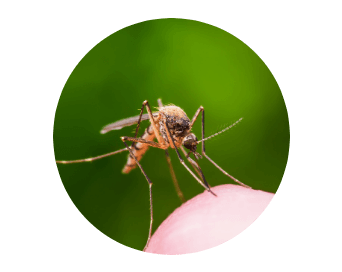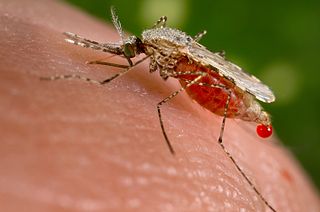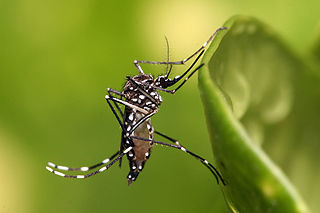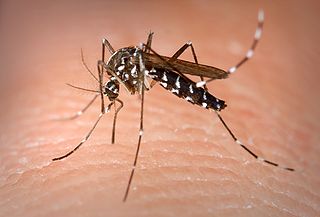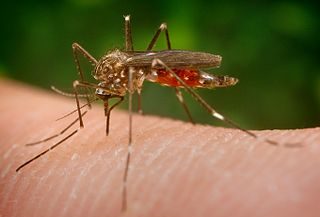About Mosquitos
When you think of pests, mosquitoes usually make the top ten list—especially if you live in a humid area or if there bodies of still water nearby. Mosquitoes are more than pests, though. Because they pierce the skin and draw blood from their victims, they carry pathogens and can infect their prey with diseases, viruses, and parasites
The mosquito’s saliva is transferred to the host during the bite and can cause an itchy rash. In addition, many species can ingest pathogens while biting, and transmit them to future hosts. In this way, mosquitoes are important vectors of diseases such as malaria, yellow fever, Chikungunya, West Nile, dengue fever, filariasis, Zika, and other arboviruses. By transmitting diseases, mosquitoes cause the deaths of more people than any other animal taxon: over 700,000 each year.
The mosquito life cycle consists of egg, larva, pupa, and adult stages. Eggs are laid on the water surface; they hatch into motile larvae that feed on aquatic algae and organic material. The adult females of most species have tube-like mouthparts (called a proboscis) that can pierce the skin of a host and feed on blood, which contains protein and iron needed to produce eggs. Thousands of mosquito species feed on the blood of various hosts — vertebrates, including mammals, birds, reptiles, amphibians, and some fish; along with some invertebrates, primarily other arthropods. This loss of blood is seldom of any importance to the host.
As true flies, mosquitoes have one pair of wings, with distinct scales on the surface. Their wings are long and narrow, as are their long, thin legs. They have slender and dainty bodies of length typically 3–6 mm, with dark grey to black coloring. Some species harbor specific morphological patterns. When at rest they tend to hold their first pair of legs outward. They are similar in appearance to midges (Chironomidae), another ancient family of flies. Tokunagayusurika akamusi, for example, is a midge fly that looks very much alike mosquitoes in that they also have slender and dainty bodies of similar colors, though larger in size. They also have only one pair of wings, but without scales on the surface. Another distinct feature to tell the two families of flies apart is the way they hold their first pair of legs – mosquitoes hold them outward, while midges hold them forward.
Mosquitoes are insects from the gnat family and have been around for 170 million years. After transitioning from egg to larva to pupa, they become adults and live anywhere from four to eight weeks. The transitioning phases vary in time according to the species of the mosquito and the climate.
Male mosquitoes are vegetarians and typically use their piercing mouthparts to extract nectar from plants. Females, other the other hand, feed on both nectar and blood in order to obtain the appropriate nutrients to produce eggs.
The best-case scenario when having been bitten by a mosquito is that you will suffer a small stinging sensation and a small welt. Some people are more sensitive to insect bites and the inflicted site will flare up and need a soothing salve to lessen the severity of the allergy. The reason for the inflammation around the bite is due to a protein in the mosquito’s saliva that prevents the blood from clotting (making it easier for the insect to drink your blood until she is full). It takes several days for the human body to break these proteins down and for the inflammation to disappear.
The West Nile virus has been worrying Americans since 1999, but Malaria affects even more people in third world countries. Other mosquito-related diseases include Dengue and Yellow fever. They also carry heartworm parasites that can infect your pets.
There are 112 genera of mosquitoes, containing approximately 3,500 species.
Human malaria is transmitted only by females of the genus Anopheles. Of the approximately 430 Anopheles species, while over 100 are known to be able to transmit malaria to humans, only 30–40 commonly do so in nature. Mosquitoes in other genera can transmit different diseases, such as yellow fever and dengue for species in the genus Aedes. The genus Aedes has over 950 species.
